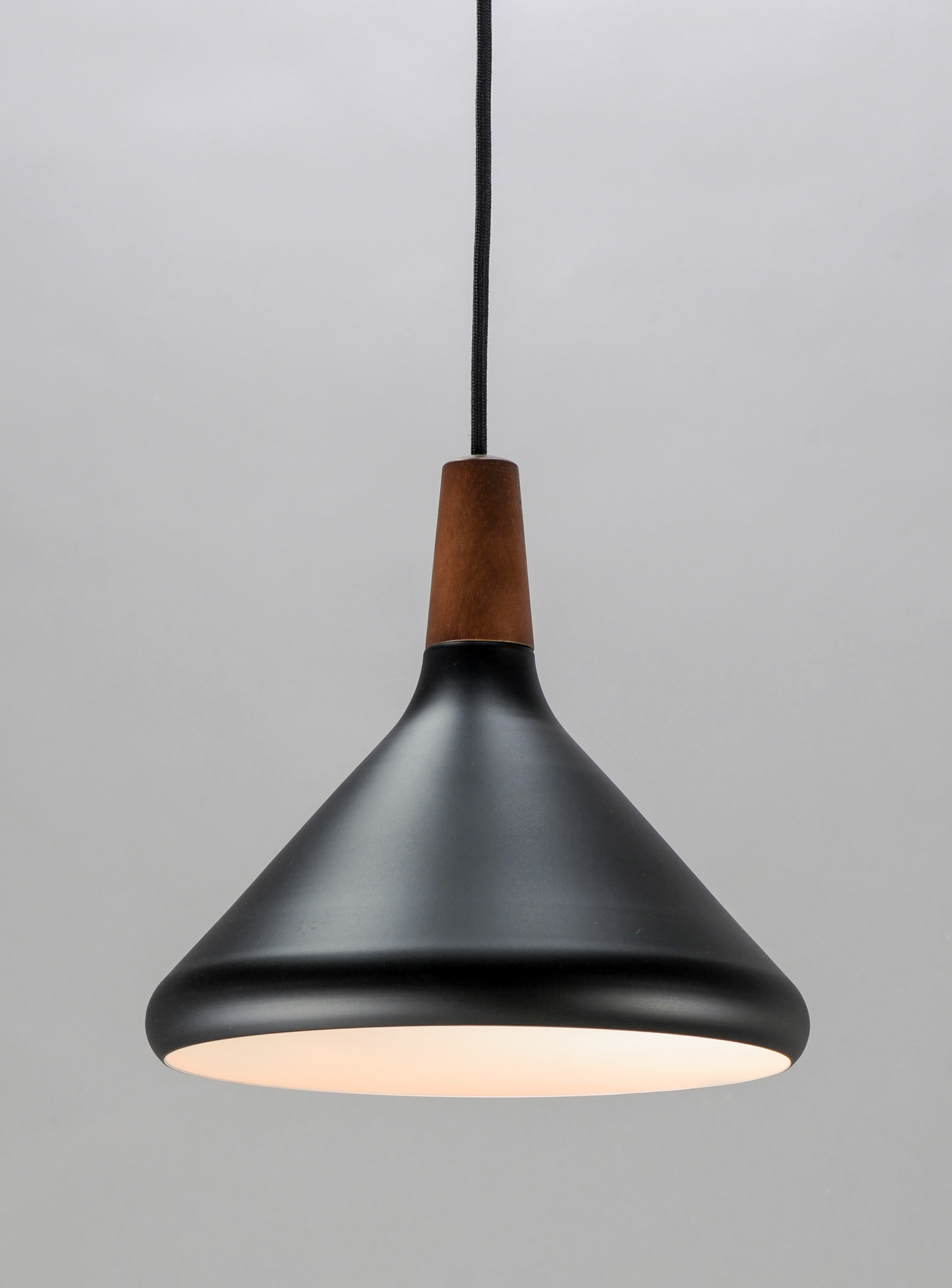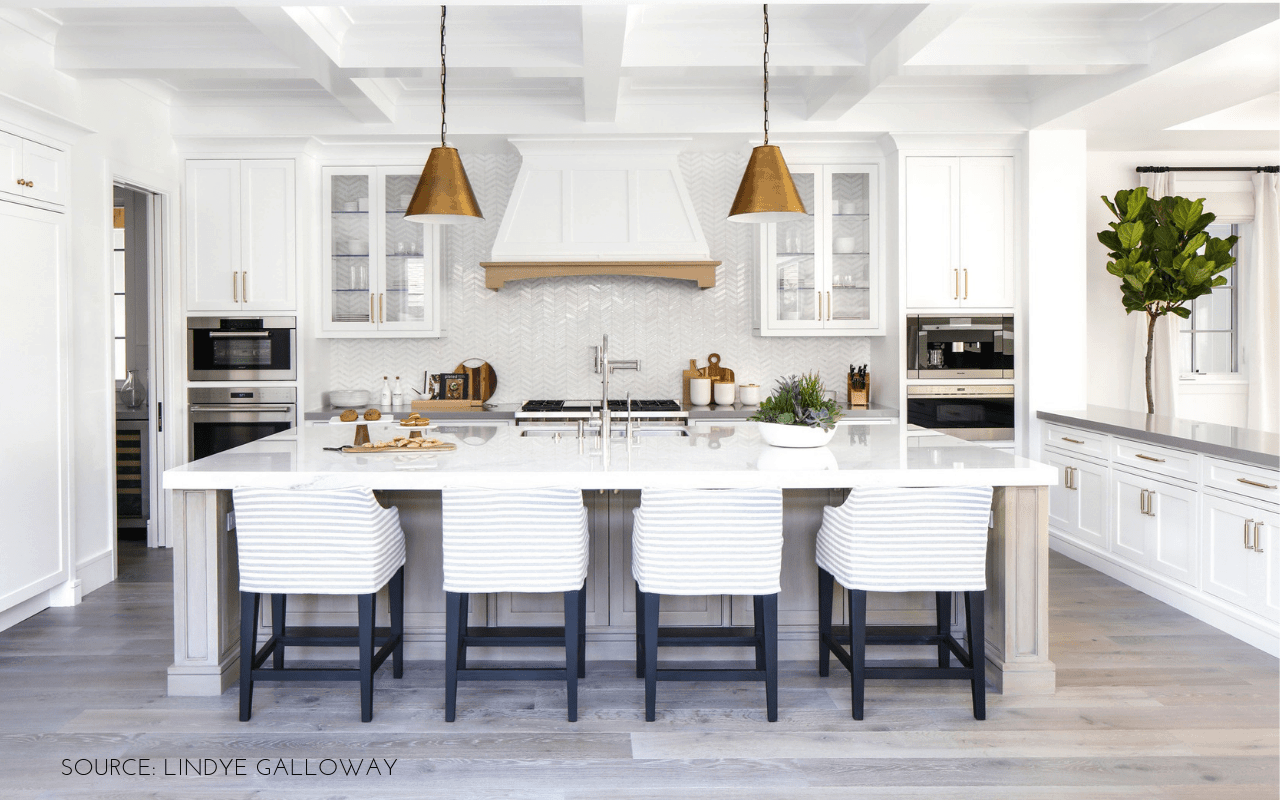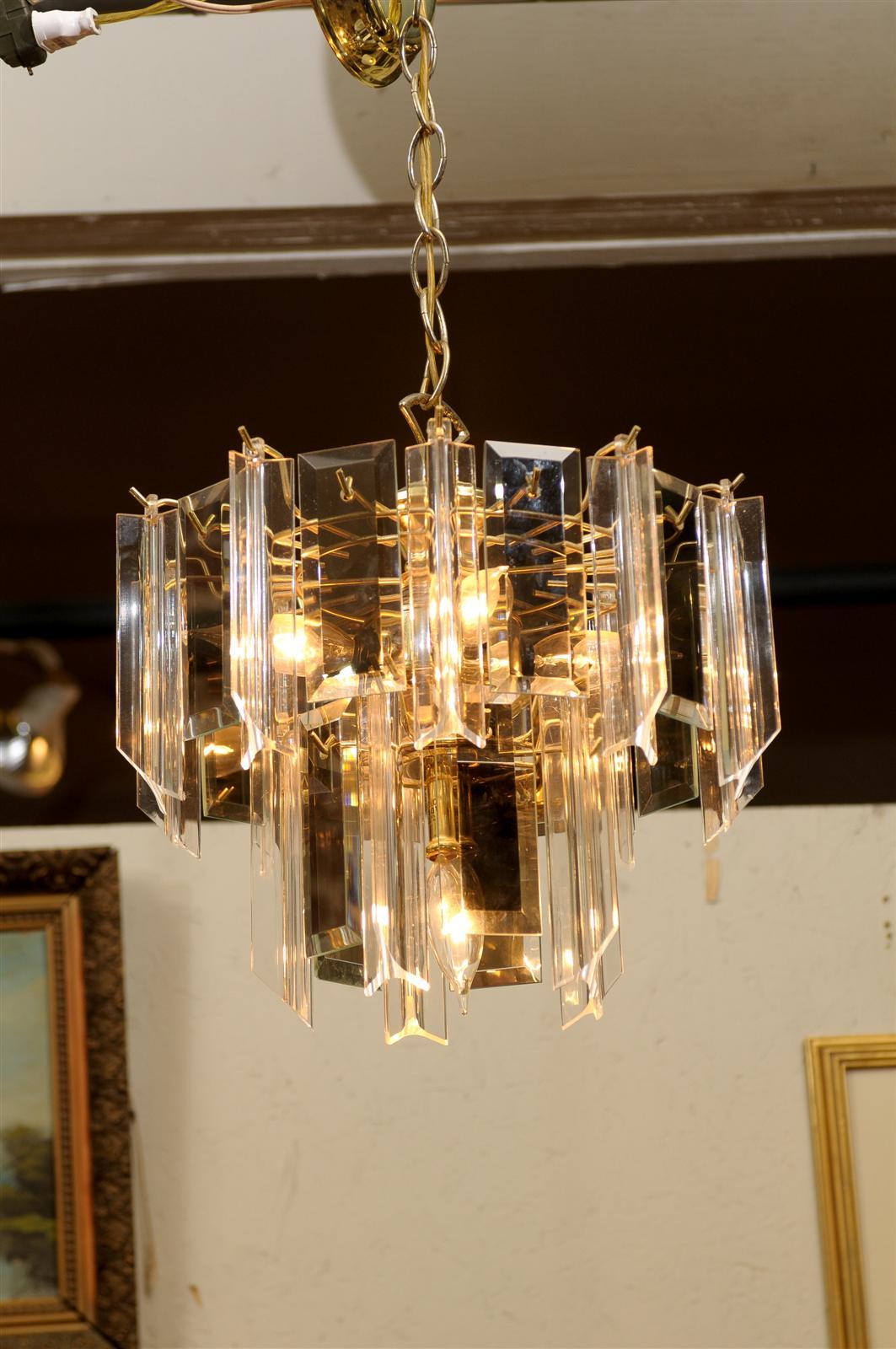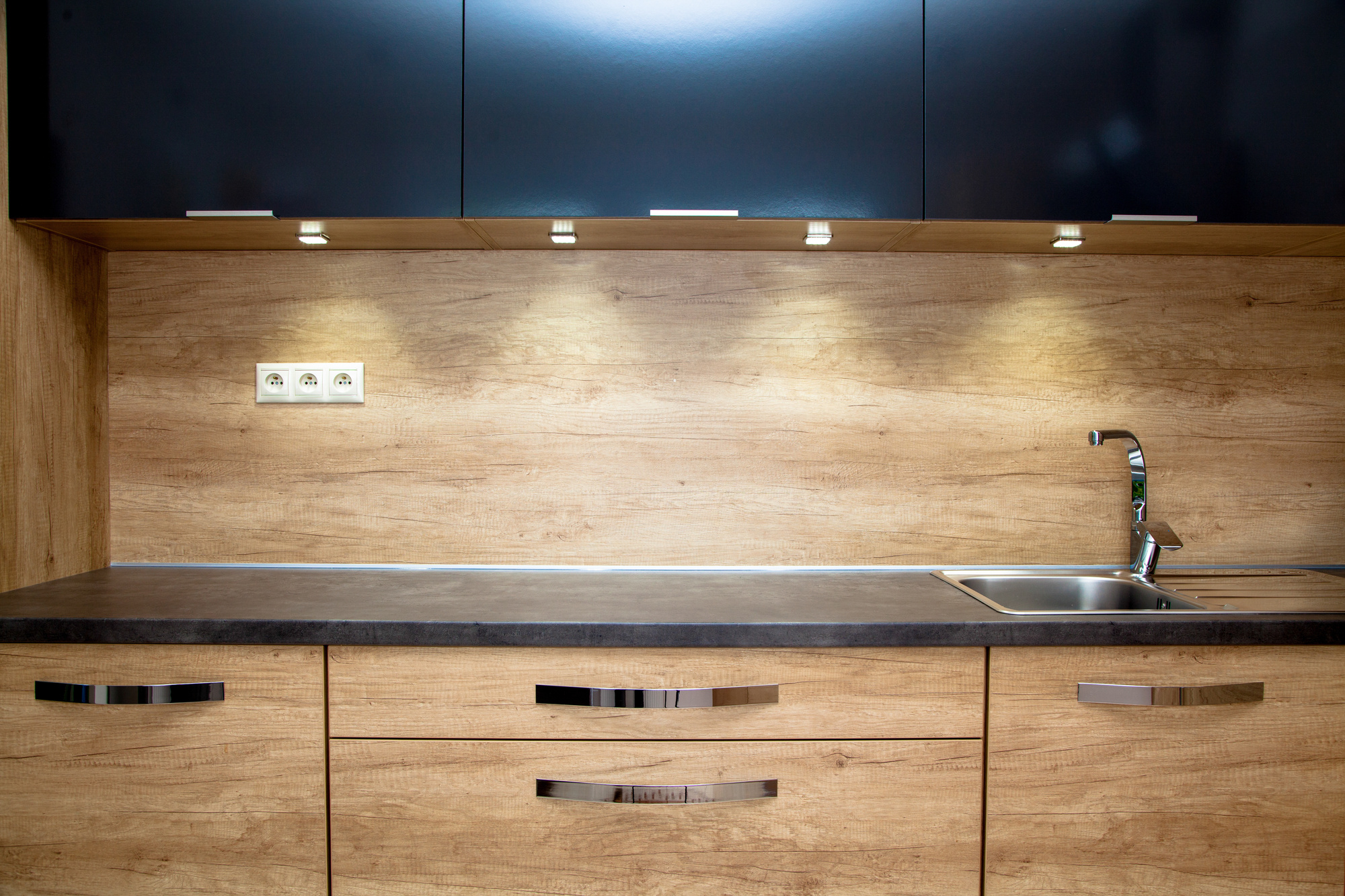When it comes to creating a warm and inviting atmosphere in your kitchen eating area, pendant lights are a popular choice. These lights hang from the ceiling and come in a variety of styles, from simple and modern to more ornate and decorative. They provide direct lighting over your dining table, making it the focal point of the room. Pendant lights can also be used to add a touch of personality and charm to your kitchen, with options such as colorful glass shades or industrial metal designs.1. Pendant Lights
For a touch of elegance and sophistication, consider adding a chandelier to your kitchen eating area. These ceiling fixtures feature multiple lights and often have intricate designs and details. Chandeliers come in a range of sizes, so you can choose one that fits the size and style of your space. They provide ample lighting for your dining area and can also add a luxurious feel to your kitchen.2. Chandelier
If you want a versatile lighting option for your kitchen eating area, track lighting is a great choice. This type of lighting features a track with multiple adjustable lights that can be directed to different areas of the room. This allows you to customize the lighting to suit your needs, whether you're cooking, eating, or entertaining. Track lighting is also a great option for smaller kitchens, as it takes up less space than traditional ceiling fixtures.3. Track Lighting
For a more subtle and modern lighting option, recessed lighting is a popular choice. These lights are installed into the ceiling and provide a soft, ambient glow to the room. They are a great option for kitchens with lower ceilings, as they don't take up any space and can make the room feel more open. Recessed lighting can also be used to highlight specific areas in the kitchen, such as a breakfast bar or a decorative feature.4. Recessed Lighting
To add both functionality and style to your kitchen eating area, consider adding under cabinet lighting. These lights are installed underneath your cabinets and provide additional task lighting for your countertops. They can also add a warm and inviting ambiance to the room. Under cabinet lighting comes in a variety of options, from LED strips to individual puck lights, allowing you to choose the best fit for your kitchen.5. Under Cabinet Lighting
If you have a smaller kitchen eating area or a lower ceiling, flush mount ceiling lights are a great option. These lights are installed directly onto the ceiling, taking up minimal space and providing ample lighting for the room. They come in a variety of styles, from simple and modern to more decorative options. Flush mount ceiling lights are also a great way to add a touch of brightness and warmth to your kitchen.6. Flush Mount Ceiling Lights
For a unique and stylish lighting option, consider adding wall sconces to your kitchen eating area. These lights are mounted onto the wall and can provide both ambient and task lighting. They are a great way to add a decorative touch to the room, with options such as vintage-inspired designs or sleek and modern styles. Wall sconces can also be used to create a cozy and intimate atmosphere in your kitchen.7. Wall Sconces
If you have a kitchen island, it's important to have proper lighting over this area. Island lighting can come in the form of pendants, chandeliers, or other ceiling fixtures. These lights provide both task lighting for food preparation and a decorative element to your kitchen. It's important to choose island lighting that is proportional to the size of your island and complements the overall design of your kitchen.8. Island Lighting
For ultimate control over the lighting in your kitchen eating area, consider installing dimmable lights. These lights allow you to adjust the brightness according to your needs and can help create a more intimate and relaxed atmosphere for meals. Dimmable lights are also a great way to save energy, as you can lower the brightness when you don't need as much light in the room.9. Dimmable Lights
Lastly, it's important to have adequate task lighting in your kitchen eating area. This type of lighting is specifically designed to provide focused lighting for tasks such as cooking or reading recipes. Task lighting can come in the form of under cabinet lights, pendant lights, or even a dedicated desk lamp. Whatever type of task lighting you choose, make sure it's bright enough to make your kitchen tasks easier and more enjoyable. In conclusion, the right lighting can make all the difference in your kitchen eating area. Consider incorporating a combination of these top 10 lighting options to create a warm, inviting, and functional space for your family and guests to enjoy. With the right lighting, your kitchen will become the heart of your home.10. Task Lighting
Lighting for a Functional and Stylish Kitchen Eating Area

The Importance of Proper Lighting in Your Kitchen
 When it comes to kitchen design, lighting is often overlooked or seen as a mere afterthought. However, lighting plays a crucial role in creating a functional and inviting space, especially in the kitchen eating area. Not only does proper lighting provide adequate visibility for cooking and dining, but it also sets the mood and enhances the overall aesthetic of the space.
When it comes to kitchen design, lighting is often overlooked or seen as a mere afterthought. However, lighting plays a crucial role in creating a functional and inviting space, especially in the kitchen eating area. Not only does proper lighting provide adequate visibility for cooking and dining, but it also sets the mood and enhances the overall aesthetic of the space.
Types of Lighting for Your Kitchen Eating Area
 When designing the lighting for your kitchen eating area, it is important to consider the three main types of lighting: ambient, task, and accent. Ambient lighting provides overall illumination and sets the general mood of the space. Task lighting, as the name suggests, is used for specific tasks, such as food preparation and cooking. Accent lighting is used to highlight specific features or areas in the kitchen, such as artwork or a kitchen island.
When designing the lighting for your kitchen eating area, it is important to consider the three main types of lighting: ambient, task, and accent. Ambient lighting provides overall illumination and sets the general mood of the space. Task lighting, as the name suggests, is used for specific tasks, such as food preparation and cooking. Accent lighting is used to highlight specific features or areas in the kitchen, such as artwork or a kitchen island.
Consider Natural Lighting
 In addition to artificial lighting, it is essential to consider natural lighting when designing your kitchen eating area. Natural light not only adds warmth and brightness to the space, but it also has numerous health benefits, including boosting mood and productivity. Incorporating large windows or skylights can help bring in natural light and create a welcoming and airy atmosphere in your kitchen.
In addition to artificial lighting, it is essential to consider natural lighting when designing your kitchen eating area. Natural light not only adds warmth and brightness to the space, but it also has numerous health benefits, including boosting mood and productivity. Incorporating large windows or skylights can help bring in natural light and create a welcoming and airy atmosphere in your kitchen.
Choosing the Right Fixtures and Bulbs
 When it comes to lighting fixtures, there are endless options to choose from, including pendant lights, chandeliers, recessed lights, and more. It is crucial to choose fixtures that not only complement the style of your kitchen but also provide adequate lighting for the space. Additionally, consider the type of bulbs you use, as they can greatly impact the color and intensity of the light. For a warm and inviting atmosphere, opt for warm-toned bulbs, while cool-toned bulbs are better suited for task lighting.
When it comes to lighting fixtures, there are endless options to choose from, including pendant lights, chandeliers, recessed lights, and more. It is crucial to choose fixtures that not only complement the style of your kitchen but also provide adequate lighting for the space. Additionally, consider the type of bulbs you use, as they can greatly impact the color and intensity of the light. For a warm and inviting atmosphere, opt for warm-toned bulbs, while cool-toned bulbs are better suited for task lighting.
Creating a Layered Lighting Design
/fin-27-sputnick-light-fixture-5a51622a5b6e2400374955c3.jpg) To achieve the perfect balance of functionality and style in your kitchen eating area, it is essential to create a layered lighting design. This means incorporating all three types of lighting and using them in combination to create a well-lit and visually appealing space. For example, you can pair ambient lighting with recessed lights for task lighting and add a pendant light above the dining table for accent lighting.
In conclusion, proper lighting is a crucial element in designing a functional and stylish kitchen eating area. By considering the different types of lighting, incorporating natural light, choosing the right fixtures and bulbs, and creating a layered lighting design, you can create a space that is not only aesthetically pleasing but also practical for everyday use. So, don't underestimate the power of lighting and make it a priority in your kitchen design.
To achieve the perfect balance of functionality and style in your kitchen eating area, it is essential to create a layered lighting design. This means incorporating all three types of lighting and using them in combination to create a well-lit and visually appealing space. For example, you can pair ambient lighting with recessed lights for task lighting and add a pendant light above the dining table for accent lighting.
In conclusion, proper lighting is a crucial element in designing a functional and stylish kitchen eating area. By considering the different types of lighting, incorporating natural light, choosing the right fixtures and bulbs, and creating a layered lighting design, you can create a space that is not only aesthetically pleasing but also practical for everyday use. So, don't underestimate the power of lighting and make it a priority in your kitchen design.


































































































.jpg)
























